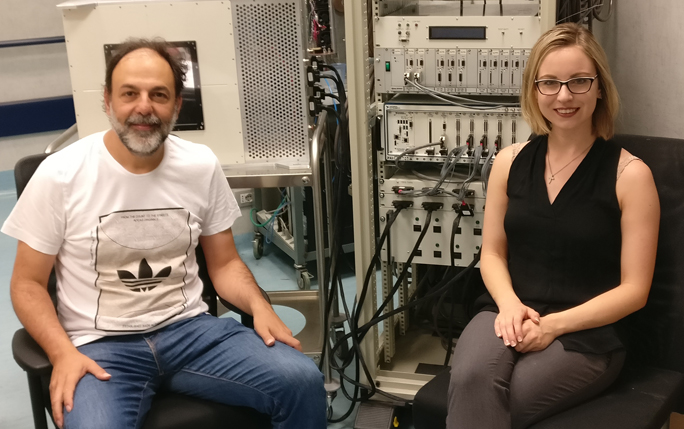CNAO and GSI together for research and optimization in hadrontherapy treatments

Two OMA Partner organizations, the GSI Helmholtz Centre for Heavy Ion Research and the CNAO National Center for Oncological Hadrontherapy, have forged a collaboration in developing the next generation of particle therapy. Their research is investigating methods to reduce irradiation time and to integrate motion management techniques, allowing a more precise treatment of tumors affected by respiratory motion.
Both institutions have the common purpose of improving particle therapy and developing related cutting-edge technology, and CNAO and GSI signed a contract to improve the technology of cancer therapy with heavy ions. Within the collaboration, the established control system at CNAO will be installed and further developed at GSI in Darmstadt.
The control system at CNAO provides several advantages for the research group at GSI. The modern, industrially available components within the treatment rooms at CNAO, such as the dose detectors will be installed at GSI, expanding potential research and development projects, mainly in reducing irradiation time and integrating motion management techniques. The next generation of particle therapy will provide sophisticated methods for motion managements, allowing for more precise treatment of tumors that move during respiration. One of the Marie Skłodowska-Curie OMA fellows, Michelle Lis, will play a key role in developing the software for the dose delivery system capable of motion management. The delivery system will be capable of dynamically treating tumors while the patient is freely breathing. This will be achieved by providing feedback on the tumor motion and using this feedback to direct the treatment delivery. Due to CNAO’s CE-label certification, transferring the system into the clinical setting will be simpler.
GSI has played a pioneering role in the establishment of heavy ion therapy in Europe, beginning in 1997, with a pilot project that treated over 440 patients with carbon ion beams, and concluding in 2008. The raster scanning technique was developed there, and which remains the state of the art technology in modern particle therapy centers throughout the world. GSI has also been the forerunner in the development of treatment methods for moving targets, such as lung tumors. Several new technologies in this area, such as beam tracking and 4D-optimization were pioneered and experimentally tested here.
The very foundation of the Italian National Center for Oncological Hadrontherapy (CNAO) is the product of important network of national and international collaborations, including GSI. Accordingly, many groups throughout the world have looked to CNAO as a model in international collaboration, and have sought the opportunity for collaboration with CNAO in developing their own research or establishing similar particle therapy centers.